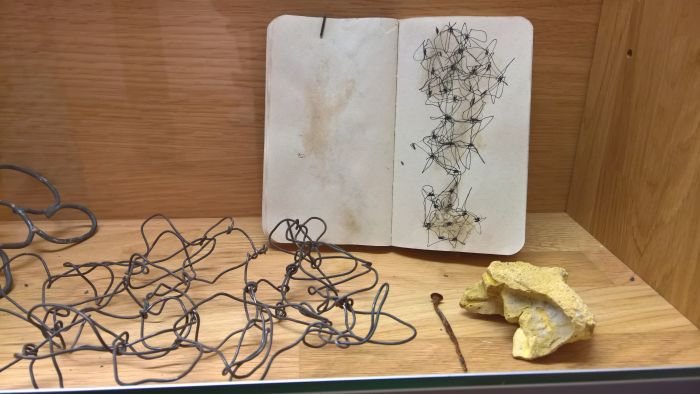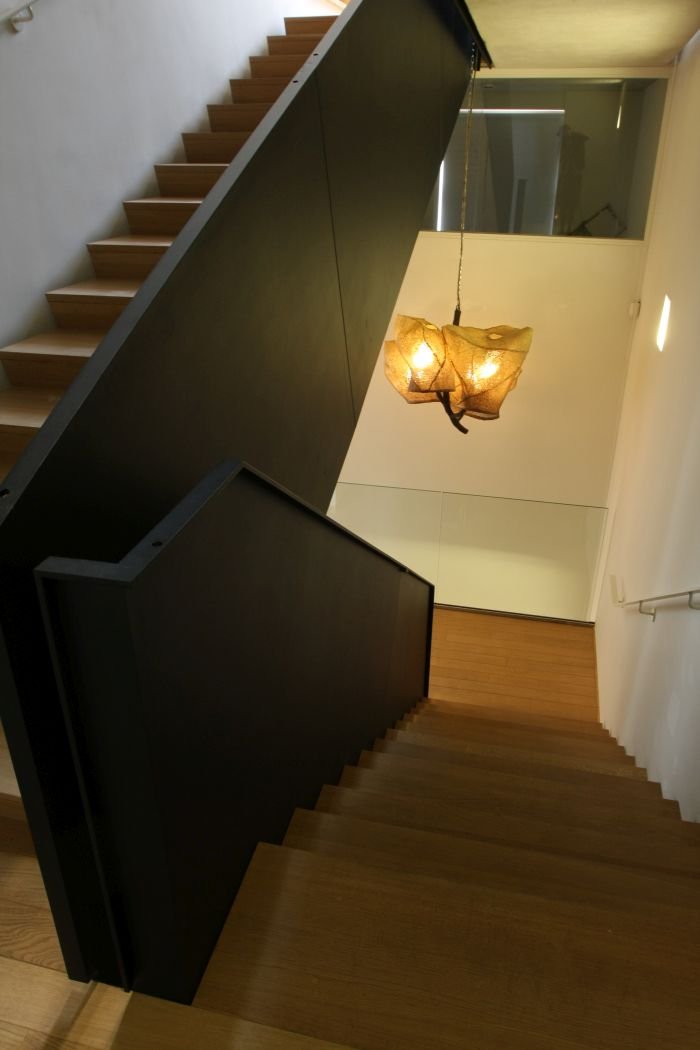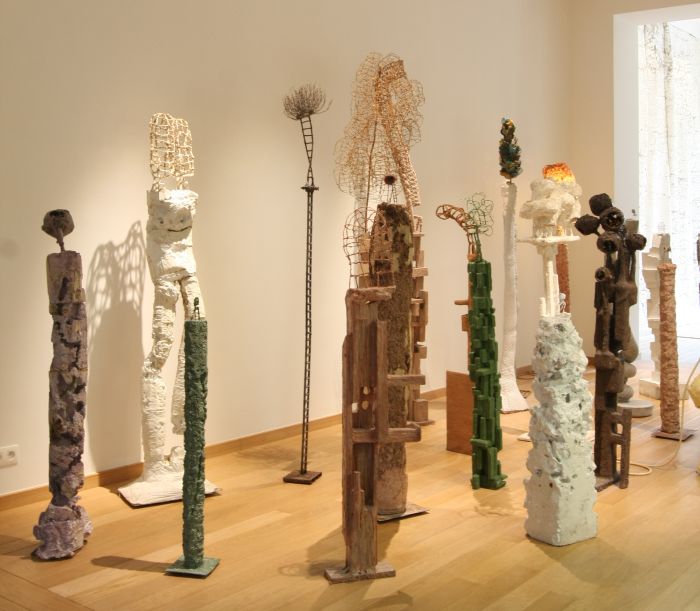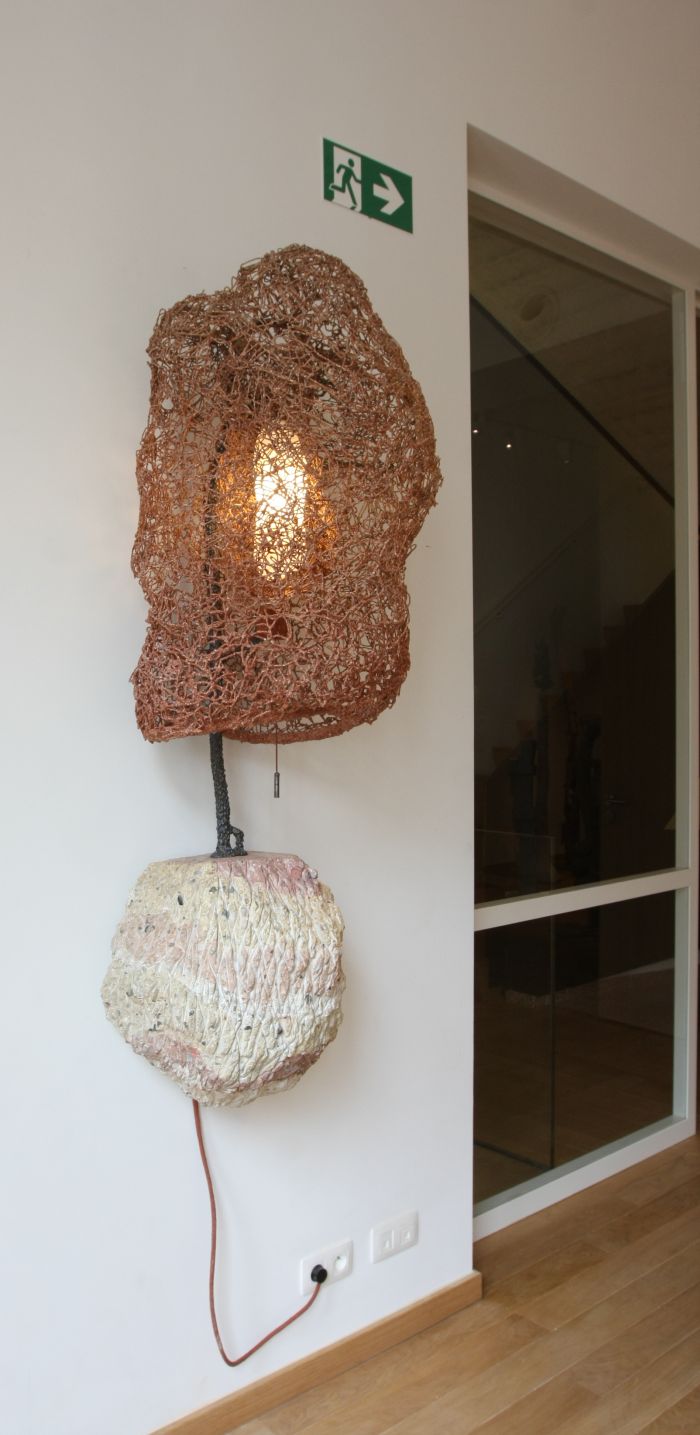Back in June 2016 we included the Stedelijk Museum ’s-Hertogenbosch's exhibition Nacho Carbonell – On the Origin of Pieces amongst our five new architecture and design exhibition recommendations, noting that, for us, the exhibition appeared to offer "an excellent opportunity to, finally, get to know the man and his work. And for all to understand his cocoon constructions, works which terrify us as much as they fascinate us."
We sadly never did make it to On the Origin of Pieces; however, the exhibition Living Organisms at the Horta Museum Brussels offers an equally good, if slightly less fulsome, opportunity to achieve the same.
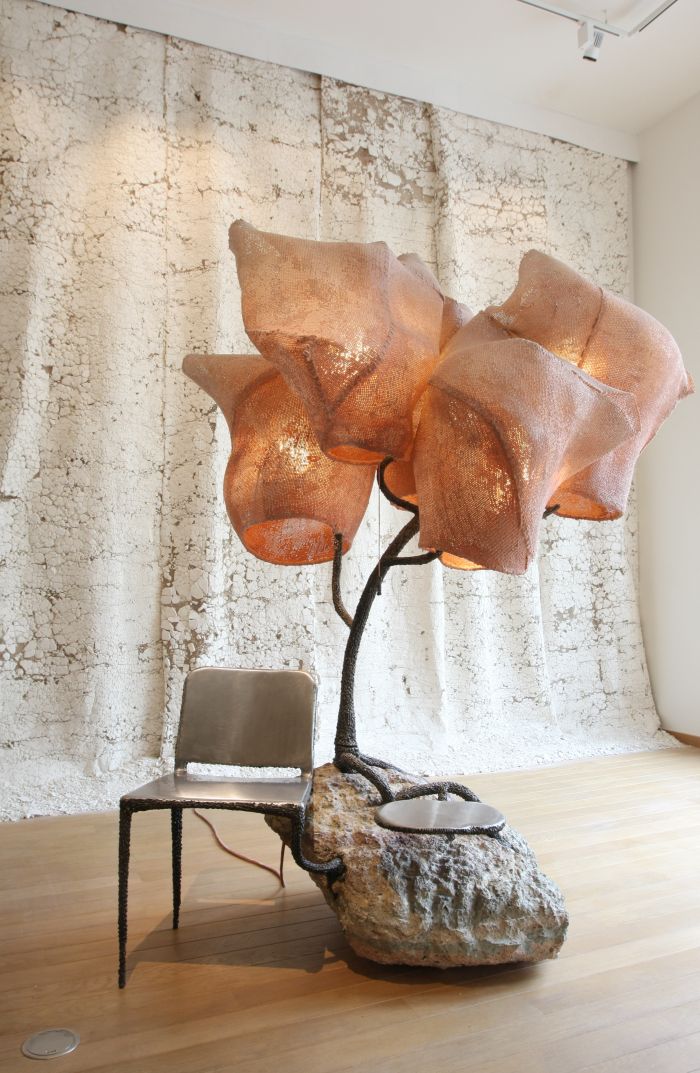
Born in Valencia, Nacho Carbonell studied Industrial Design at the city's Cardenal Herrera University before moving to Design Academy Eindhoven from where he graduated in 2007 Cum Laude with the project Pump it Up. In essence a bean bag-esque chair connected to a series of inflatable animals, when you sit in the chair your body mass displaces the therein contained air and your animal companions slowly inflate, or if you prefer, come to life. When you stand up they deflate, and slowly fade. A very gentle metaphor on inter-dependencies and global responsibilities.
Following his graduation Nacho remained in Eindhoven, originally as part of the Atelierdorp studio collective before moving to the city's Sectie C creative space, and the past decade has seen him develop projects as varied as the Luciferase lamp collection, or as Nacho himself calls them "light-producing creatures" realised with Paris based Galerie BSL; the Skin furniture collection in which one can, literally, go under the object's skin, allowing you to store/hide/deposit items, or yourself, within; or the Fleeting Clocks which measure and mark time by physical transformation and destruction.
In context of Brussels Design September 2017 the Horta Museum are presenting through the exhibition Living Organisms an introduction to Nacho Carbonell and his works, featuring both finished objects, and we use the adjective advisedly because our opinion is very much that a Nacho Carbonell work is never finished, but is always a snapshot of an idea in development, supported by notebooks, sketches and maquettes which help illustrate and illuminate, when not directly explain, his work process.
But then, can one explain the Nacho Carbonell work process? Can Nacho?
"It's very diverse", comes the half-expected reply, "sometimes I start with drawings, but other times I just dive straight in and begin with the 3D object. But as we see with all the maquettes and other objects here, an idea doesn't automatically end with an object, sometimes you start but then you need to leave them and eventually they will grow."
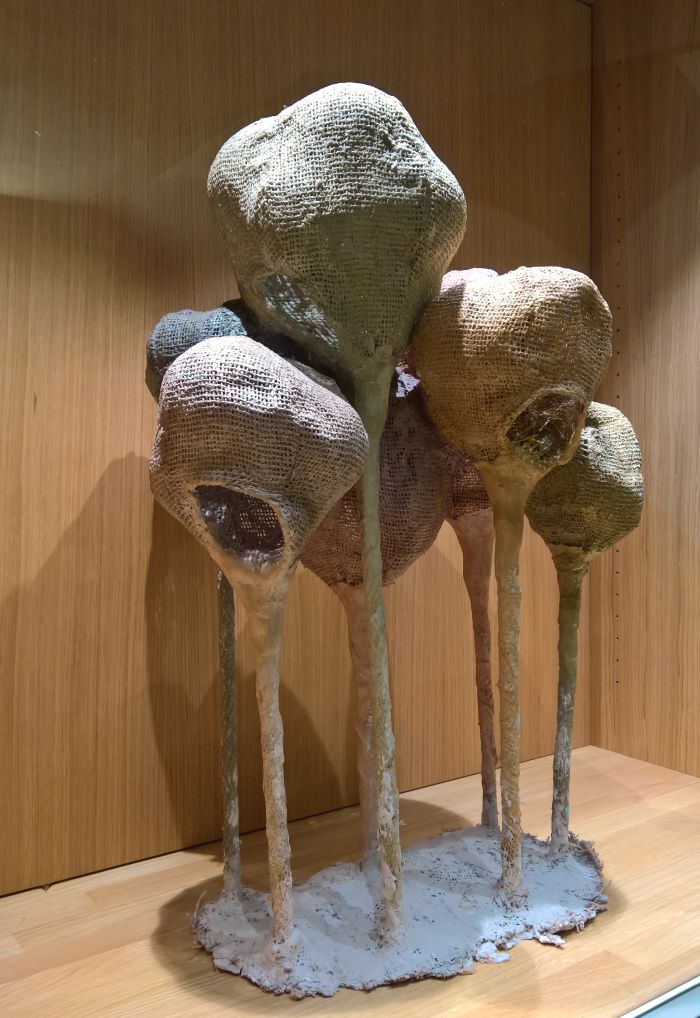
That Living Organisms is being staged in the Horta Museum is no chance occurrence. As one of the leading protagonists of Belgian, if not European, Art Nouveau, Victor Horta not only played an influential role in the development of arts, crafts, design and architecture in the first decades of the 20th century, but in doing so created a body of work which is inspired by natural forms and which contains an inherent freedom of movement, an organic fluidity, and which represents new interpretations of form, function and materials.
As with much of Nacho Carbonell's work.
Similarly, as when viewing many of the more fanciful creations of Art Nouveau, viewing Nacho Carbonell's work it is all to easy to lose oneself in fantasy landscapes, to imagine the objects and instillations arose in a mythical kingdom and that they are themselves inhabited by some fabled creatures. That however would be to repeat the mistakes made when viewing the more outlandish works of Horta and his contemporaries: the form is more often than not an expression of an idea, an explanation of a position, and not a concrete proposition.
Or put another way, just as the fairytales of the Brothers Grimm aren't about romanticising and escapism but about preserving and sharing the collected wisdom of generations past, so to is the work of Nacho Carbonell an attempt to bring some sense to the contemporary world and to help the individual find their place. And arguably their peace.
A little Art Nouveau, a little steampunk, a lot challenging, Nacho Carbonell's attempts at explaining the world aren't necessarily immediately accessible, but are often very simple, at times overly so, or at least are once one gets over the easy interpretation and distracting visuals.
Which in itself is an important message for contemporary society.
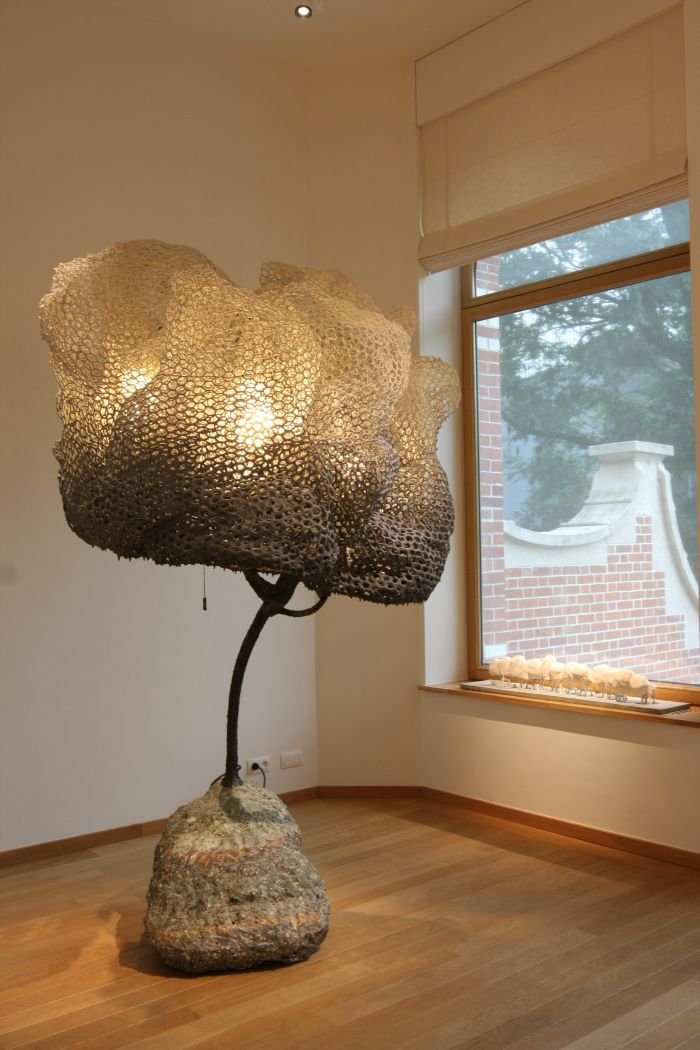
A compact, bijou, presentation, Living Organisms opens with a piece from Nacho's 2017 Forest collection, in essence a seat and table attached to a rock from which a tree is sprouting - and thus just the sort of fantasy landscape creation we noted above as not actually, tacitly, existing in Nacho's canon - before moving on to a collection of ideas, sketches and inspirations, those models and welded masses which can hang around for years waiting for the zeitgeist to develop them further, and ends with a second piece from the Forest collection. And a cocoon.
An established feature of Nacho Carbonell's oeuvre, the first cocoons appeared in 2006 as biodegradable, tree mounted structures, if you will uncommon butterfly cocoons and intended as temporary accommodation solutions reflective of that believed nomadicity of our modern age, before the 2008 Evolution collection saw them take on their current character and intention as sanctuaries from the intensity of the modern world, refuges in which to stop, breath and catch up. That first group of three cocoons has since, well, evolved, into a veritable army of cocoons including the 2014 Tree Chair Family, a member of which stands in Brussels.
Menacingly.
For us it's intention is clearly to devour us, not to shelter and protect. Although naturally drawn to it, fascinated by it, we deeply distrust its motives......
"Really?" asks Nacho, smiling wryly at our apprehension.
Yeah. Genuinely, cannot imagine voluntarily climbing inside one.....
"But where would we be if we always gave into our fears?", challenges Nacho in response, "I, for example, would never have been able to achieve any of this if I'd listened to the doubts about whether it was possible. If you can overcome your fears, can cross that frontier, then a whole world of opportunities opens up. And with the pods, once you get inside you'll discover it's nice, cosy and comfortable!!"
Should anyone see Jacob or Wilhelm Grimm, do please tell them about the exhibition. We think they'd be interested.......
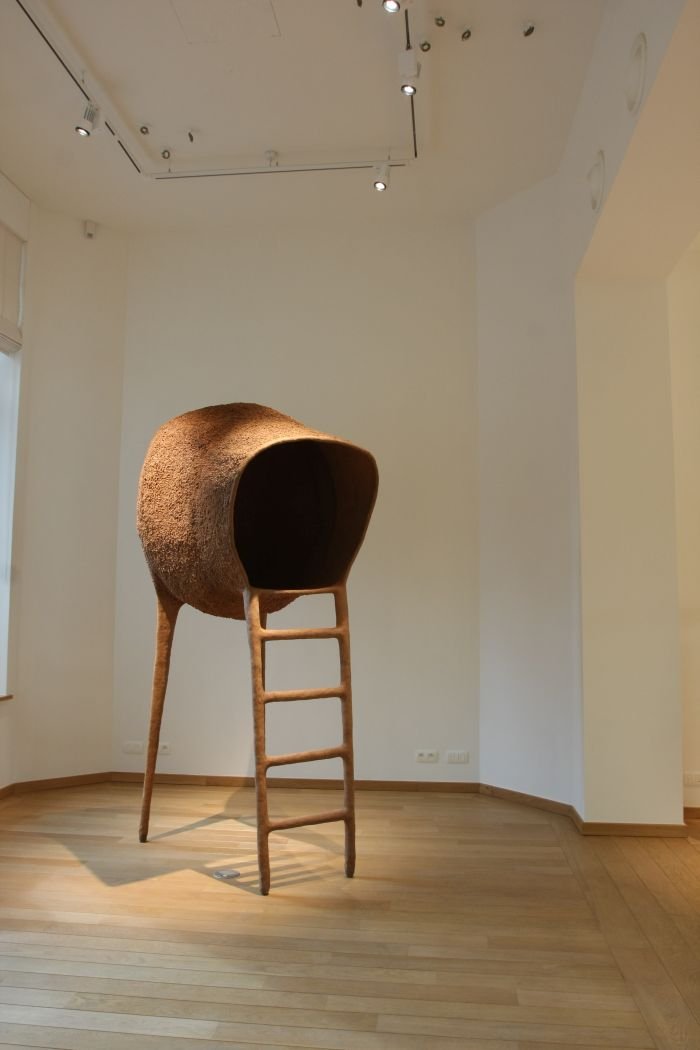
Although in many regards offering a dialogue between Nacho Carbonell and Victor Horta, Living Organisms is largely an indirect one. For although a couple of works by Nacho are mixed through the Horta Museum's permanent exhibition, it is predominately a case of two separate presentations.
A situation which although on the one hand is, yes, a shame, the direct juxtapose of the two epochs, the two understandings of materials, form and construction, the two interpretations of contemporary needs, would have been most interesting; but on the other thoroughly understandable in context of the effort that would have been required for what is a relatively small exhibition. Plus, such a dialogue ideally needs to be undertaken on a larger scale, arguably involving more protagonists, and so we hope that with the exhibition the seed of a future project has been planted, for as already stated, "sometimes you start but the you need to leave them and eventually they will grow."
And so visitors are left to carry their thoughts from one exhibition space to the other, and reflect from afar, but for all to study Nacho Carbonell's works, and future works, in isolation. And what does Nacho hope that they take with them?
"I hope that through the exhibition we can bring people closer to the works, that they develop a connection with them and maybe go away, think about things and realise that there are alternative possibilities."
Nacho Carbonell - Living Organisms runs at the Horta Museum, 25, rue Américaine, 1060 Brussels until Sunday October 8th.
Full details, including opening times, can be found at www.hortamuseum.be
And full details on Nacho Carbonell and his work can be found at http://nachocarbonell.com
